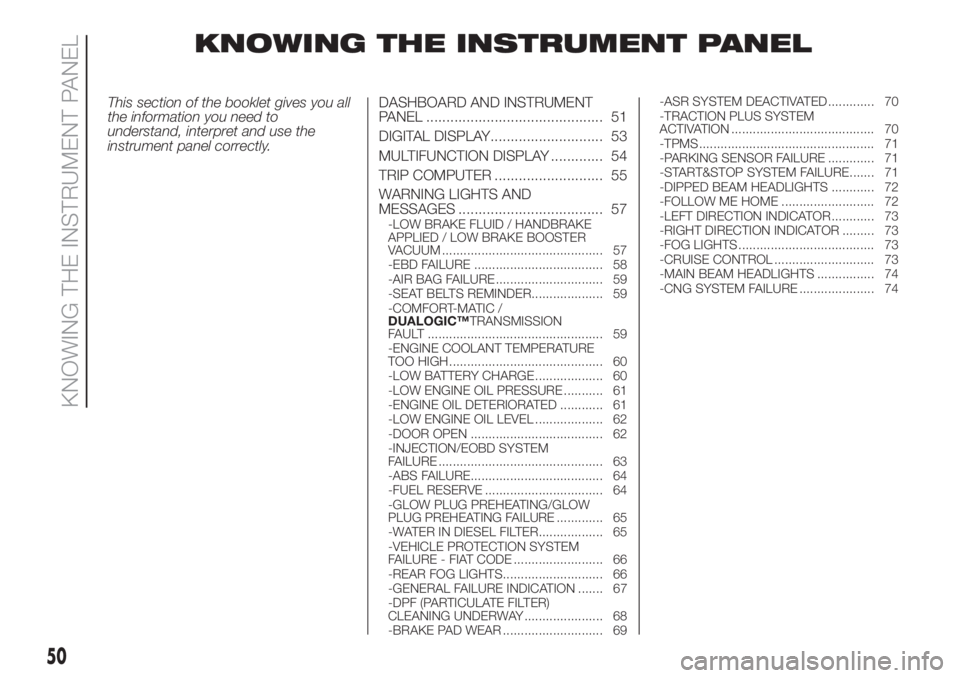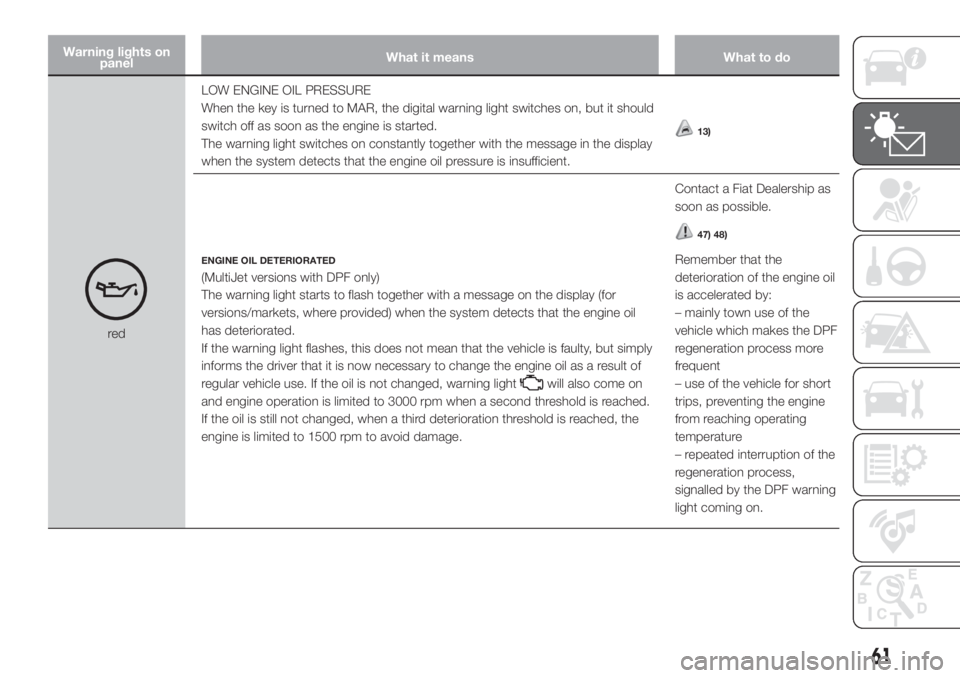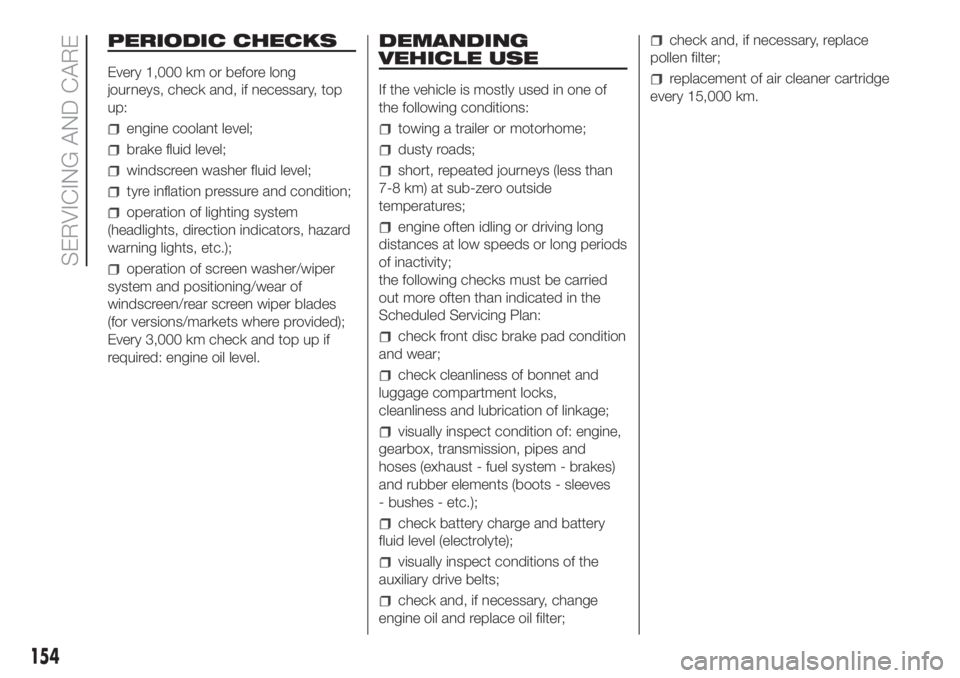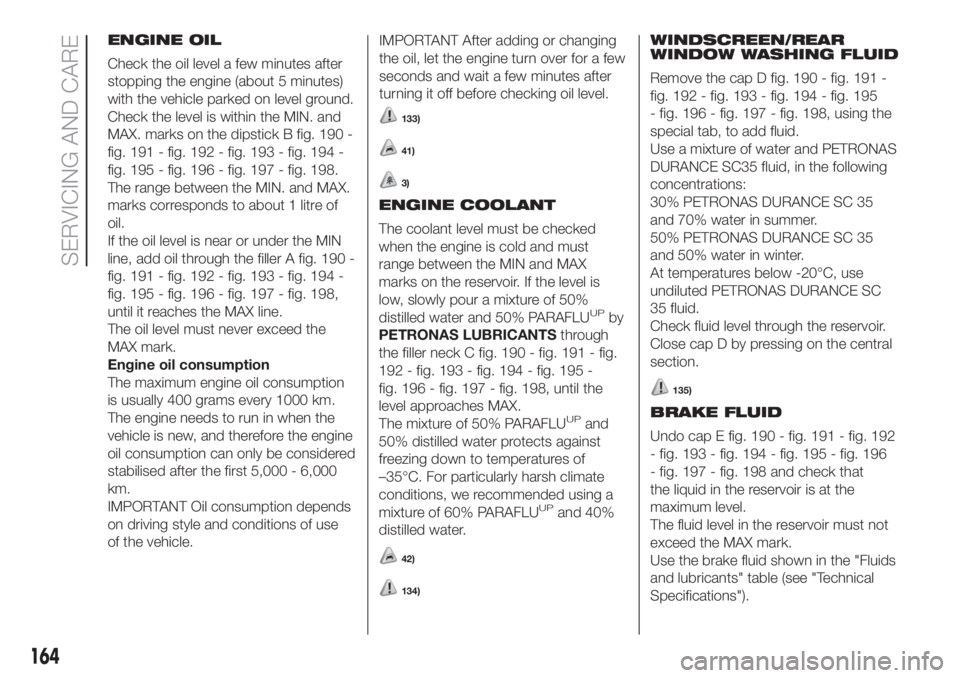oil temperature FIAT DOBLO COMBI 2018 Owner handbook (in English)
[x] Cancel search | Manufacturer: FIAT, Model Year: 2018, Model line: DOBLO COMBI, Model: FIAT DOBLO COMBI 2018Pages: 272, PDF Size: 23.75 MB
Page 52 of 272

KNOWING THE INSTRUMENT PANEL
This section of the booklet gives you all
the information you need to
understand, interpret and use the
instrument panel correctly.DASHBOARD AND INSTRUMENT
PANEL ............................................ 51
DIGITAL DISPLAY............................ 53
MULTIFUNCTION DISPLAY ............. 54
TRIP COMPUTER ........................... 55
WARNING LIGHTS AND
MESSAGES .................................... 57
-LOW BRAKE FLUID / HANDBRAKE
APPLIED / LOW BRAKE BOOSTER
VACUUM ............................................. 57
-EBD FAILURE .................................... 58
-AIR BAG FAILURE .............................. 59
-SEAT BELTS REMINDER.................... 59
-COMFORT-MATIC /
DUALOGIC™TRANSMISSION
FAULT ................................................. 59
-ENGINE COOLANT TEMPERATURE
TOO HIGH........................................... 60
-LOW BATTERY CHARGE ................... 60
-LOW ENGINE OIL PRESSURE ........... 61
-ENGINE OIL DETERIORATED ............ 61
-LOW ENGINE OIL LEVEL ................... 62
-DOOR OPEN ..................................... 62
-INJECTION/EOBD SYSTEM
FAILURE .............................................. 63
-ABS FAILURE..................................... 64
-FUEL RESERVE ................................. 64
-GLOW PLUG PREHEATING/GLOW
PLUG PREHEATING FAILURE ............. 65
-WATER IN DIESEL FILTER.................. 65
-VEHICLE PROTECTION SYSTEM
FAILURE - FIAT CODE ......................... 66
-REAR FOG LIGHTS............................ 66
-GENERAL FAILURE INDICATION ....... 67
-DPF (PARTICULATE FILTER)
CLEANING UNDERWAY ...................... 68
-BRAKE PAD WEAR ............................ 69-ASR SYSTEM DEACTIVATED ............. 70
-TRACTION PLUS SYSTEM
ACTIVATION ........................................ 70
-TPMS................................................. 71
-PARKING SENSOR FAILURE ............. 71
-START&STOP SYSTEM FAILURE....... 71
-DIPPED BEAM HEADLIGHTS ............ 72
-FOLLOW ME HOME .......................... 72
-LEFT DIRECTION INDICATOR ............ 73
-RIGHT DIRECTION INDICATOR ......... 73
-FOG LIGHTS ...................................... 73
-CRUISE CONTROL ............................ 73
-MAIN BEAM HEADLIGHTS ................ 74
-CNG SYSTEM FAILURE ..................... 74
50
KNOWING THE INSTRUMENT PANEL
Page 63 of 272

Warning lights on
panelWhat it means What to do
redLOW ENGINE OIL PRESSURE
When the key is turned to MAR, the digital warning light switches on, but it should
switch off as soon as the engine is started.
The warning light switches on constantly together with the message in the display
when the system detects that the engine oil pressure is insufficient.
13)
ENGINE OIL DETERIORATED
(MultiJet versions with DPF only)
The warning light starts to flash together with a message on the display (for
versions/markets, where provided) when the system detects that the engine oil
has deteriorated.
If the warning light flashes, this does not mean that the vehicle is faulty, but simply
informs the driver that it is now necessary to change the engine oil as a result of
regular vehicle use. If the oil is not changed, warning light
will also come on
and engine operation is limited to 3000 rpm when a second threshold is reached.
If the oil is still not changed, when a third deterioration threshold is reached, the
engine is limited to 1500 rpm to avoid damage.Contact a Fiat Dealership as
soon as possible.
47) 48)
Remember that the
deterioration of the engine oil
is accelerated by:
– mainly town use of the
vehicle which makes the DPF
regeneration process more
frequent
– use of the vehicle for short
trips, preventing the engine
from reaching operating
temperature
– repeated interruption of the
regeneration process,
signalled by the DPF warning
light coming on.
61
Page 156 of 272

PERIODIC CHECKS
Every 1,000 km or before long
journeys, check and, if necessary, top
up:
engine coolant level;
brake fluid level;
windscreen washer fluid level;
tyre inflation pressure and condition;
operation of lighting system
(headlights, direction indicators, hazard
warning lights, etc.);
operation of screen washer/wiper
system and positioning/wear of
windscreen/rear screen wiper blades
(for versions/markets where provided);
Every 3,000 km check and top up if
required: engine oil level.
DEMANDING
VEHICLE USE
If the vehicle is mostly used in one of
the following conditions:
towing a trailer or motorhome;
dusty roads;
short, repeated journeys (less than
7-8 km) at sub-zero outside
temperatures;
engine often idling or driving long
distances at low speeds or long periods
of inactivity;
the following checks must be carried
out more often than indicated in the
Scheduled Servicing Plan:
check front disc brake pad condition
and wear;
check cleanliness of bonnet and
luggage compartment locks,
cleanliness and lubrication of linkage;
visually inspect condition of: engine,
gearbox, transmission, pipes and
hoses (exhaust - fuel system - brakes)
and rubber elements (boots - sleeves
- bushes - etc.);
check battery charge and battery
fluid level (electrolyte);
visually inspect conditions of the
auxiliary drive belts;
check and, if necessary, change
engine oil and replace oil filter;
check and, if necessary, replace
pollen filter;
replacement of air cleaner cartridge
every 15,000 km.
154
SERVICING AND CARE
Page 166 of 272

ENGINE OIL
Check the oil level a few minutes after
stopping the engine (about 5 minutes)
with the vehicle parked on level ground.
Check the level is within the MIN. and
MAX. marks on the dipstick B fig. 190 -
fig. 191 - fig. 192 - fig. 193 - fig. 194 -
fig. 195 - fig. 196 - fig. 197 - fig. 198.
The range between the MIN. and MAX.
marks corresponds to about 1 litre of
oil.
If the oil level is near or under the MIN
line, add oil through the filler A fig. 190 -
fig. 191 - fig. 192 - fig. 193 - fig. 194 -
fig. 195 - fig. 196 - fig. 197 - fig. 198,
until it reaches the MAX line.
The oil level must never exceed the
MAX mark.
Engine oil consumption
The maximum engine oil consumption
is usually 400 grams every 1000 km.
The engine needs to run in when the
vehicle is new, and therefore the engine
oil consumption can only be considered
stabilised after the first 5,000 - 6,000
km.
IMPORTANT Oil consumption depends
on driving style and conditions of use
of the vehicle.IMPORTANT After adding or changing
the oil, let the engine turn over for a few
seconds and wait a few minutes after
turning it off before checking oil level.
133)
41)
3)
ENGINE COOLANT
The coolant level must be checked
when the engine is cold and must
range between the MIN and MAX
marks on the reservoir. If the level is
low, slowly pour a mixture of 50%
distilled water and 50% PARAFLU
UPby
PETRONAS LUBRICANTSthrough
the filler neck C fig. 190 - fig. 191 - fig.
192 - fig. 193 - fig. 194 - fig. 195 -
fig. 196 - fig. 197 - fig. 198, until the
level approaches MAX.
The mixture of 50% PARAFLU
UPand
50% distilled water protects against
freezing down to temperatures of
–35°C. For particularly harsh climate
conditions, we recommended using a
mixture of 60% PARAFLU
UPand 40%
distilled water.
42)
134)
WINDSCREEN/REAR
WINDOW WASHING FLUID
Remove the cap D fig. 190 - fig. 191 -
fig. 192 - fig. 193 - fig. 194 - fig. 195
- fig. 196 - fig. 197 - fig. 198, using the
special tab, to add fluid.
Use a mixture of water and PETRONAS
DURANCE SC35 fluid, in the following
concentrations:
30% PETRONAS DURANCE SC 35
and 70% water in summer.
50% PETRONAS DURANCE SC 35
and 50% water in winter.
At temperatures below -20°C, use
undiluted PETRONAS DURANCE SC
35 fluid.
Check fluid level through the reservoir.
Close cap D by pressing on the central
section.
135)
BRAKE FLUID
Undo cap E fig. 190 - fig. 191 - fig. 192
- fig. 193 - fig. 194 - fig. 195 - fig. 196
- fig. 197 - fig. 198 and check that
the liquid in the reservoir is at the
maximum level.
The fluid level in the reservoir must not
exceed the MAX mark.
Use the brake fluid shown in the "Fluids
and lubricants" table (see "Technical
Specifications").
164
SERVICING AND CARE